
Every Day Counts 4:
Integrating NEPA and Permitting Increases Efficiency in Environmental Review

What is Every Day Counts?
Every Day Counts (EDC) is a cooperative partnership between the Federal Highway Administration (FHWA) and the American Association of State Highway and Transportation Officials (AASHTO) to speed up the delivery of highway projects and to address the challenges presented by limited budgets. Using a two-year deployment cycle, FHWA and AASHTO facilitate sharing of specifications, best practices, lessons learned, and relevant data among stakeholders. The result is rapid technology transfer and accelerated deployment of innovation across the Nation.
The FHWA Office of Project Development and Environmental Review (HEPE) oversees four EDC innovations:
- Implementing quality environmental documentation (IQED).
- Programmatic agreements (PAs).
- Integrating the National Environmental Policy Act (NEPA) and permitting.
- Virtual public involvement.
As part of the EDC-4 initiative Integrating NEPA and Permitting, the Federal Highway Administration (FHWA) is working closely with States and territories on strategies to expedite project delivery for projects that impact aquatic resources, historic and cultural resources, and endangered species.
The EDC-4 initiative was developed to help State departments of transportation (DOTs) better navigate many of the challenges that can arise during the environmental review and permitting process for transportation projects under the National Environmental Policy Act (NEPA). These include:
- Lack of early engagement with resource and permitting agencies.
- Delayed identification of key environmental and permitting issues.
- Duplicative efforts that result in the inefficient use of time and resources.
Integrating NEPA and permitting allows environmental and permitting reviews to happen concurrently, establishing a more effective and efficient regulatory review process. FHWA is working with 18 State DOTs to focus on improvements in the following four areas:
- Scalable approaches for different NEPA classes of action.
- Flexible project delivery processes.
- Increased communication among agencies and dedicated liaisons.
- Web-based project delivery tools.
This issue of Successes in Stewardship briefly discusses:
- Success Stories: EDC-4 in action.
- Benefits of the EDC-4 approach.
- Resources.
Success Stories: EDC-4 in Action
Key successes under EDC-4 include better integration of the permitting process through NEPA/Section 404 mergers, innovative mitigation approaches, Section 106 programmatic agreements, and, as part of a broader effort, assisting States with implementing One Federal Decision (OFD)—under Executive Order 13807. To date, FHWA has provided technical assistance to 10 States and territories, is actively assisting eight States under EDC-4, and is also engaged in a multistate effort in the Northeast and Mid-Atlantic States for Endangered Species Act (ESA) and Essential Fish Habitat (EFH) assistance (see Figure 1).
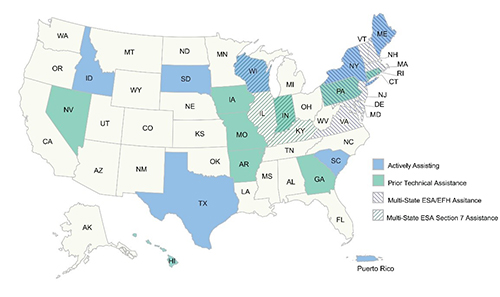
Figure 1. Map showing EDC-4 engagement across States and Territories.
(credit: FHWA/Volpe illustration)
NEPA/Section 404 Mergers
The U.S. Army Corps of Engineers (USACE) is responsible for issuing permits for projects that involve the discharge of fill into wetlands or waters of the U.S. under Section 404 of the Clean Water Act, and several other agencies may also be involved for NEPA review. The goal of the NEPA/404 merger is early and active interagency coordination to expedite project delivery while minimizing impacts to aquatic resources. The EDC-4 initiative provided support for the following efforts related to NEPA/404 mergers.
- Georgia Local Coordination Procedures: The Georgia DOT (GDOT), FHWA, and USACE began an effort in spring 2018 to update their 2002 Local Coordination Procedures (LCP). The LCP provides a framework for coordination among FHWA, GDOT, and USACE that encourages early coordination, clarifies the project development process, and establishes roles for all team members. These changes will help improve the consistency and efficiency of permitting for GDOT projects under Section 404(b)(1) of the Clean Water Act. A signing ceremony was held in August 2019 in Atlanta for GDOT, FHWA, and the USACE to memorialize the updated LCP.
- Puerto Rico: FHWA is assisting Puerto Rico with development of a NEPA/404 merger agreement. In December 2019, FHWA shared a draft template agreement with the FHWA Florida Division and the USACE Antilles Office, and is in the process of determining how to finalize and roll out the new merger process. Once in place, the merger agreement will help establish a more efficient and consistent process for 404 permitting during NEPA review by improving interagency coordination.
Innovative Mitigation
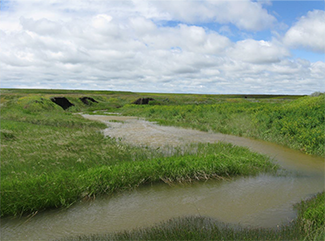
Figure 2. Potential mitigation opportunity in Idaho. (credit: Bureau of Land Management)
As part of the NEPA process, the mitigation hierarchy occurs in the following order:
Avoid → Minimize → Repair or Restore → Reduce over time → Compensate.
New ways of thinking about mitigation help create more flexibility in the permitting and project delivery process and include advanced and programmatic approaches as well as novel mechanisms for mitigation banking.
- New York Culverts: The New York State Department of Environmental Conservation (NYSDEC), USACE, and FHWA have developed a programmatic approach for assessing culverts and bridges for aquatic organism passage (AOP) at highway-stream crossings. NYSDEC and USACE require that all replaced, rehabilitated, and new stream crossings provide AOP. However, NY State previously had no standard method of assessing and prioritizing crossings or barriers. The agencies have agreed to adopt the North Atlantic Aquatic Connectivity Collaborative (NAACC) method of assessments that establishes a standard that can be compared across multiple States and helps bring more predictability and transparency to the permitting process in NY State. The new culvert approach was also incorporated into the State’s new Transportation Regional General Permit (RGP) between FHWA and USACE, which is expected to be finalized in 2020. The culvert programmatic agreement and RGP are expected to significantly facilitate project planning and design of routine transportation projects.
- Idaho: FHWA assisted with the creation of a Mitigation Workgroup to address challenges with identifying suitable stream and wetland mitigation opportunities in Idaho. Workgroup members include FHWA, the Environmental Protection Agency, USACE, U.S. Forest Service, and Idaho Transportation Department. The agencies are working together to develop an in-lieu fee program, lease Federal lands for compensatory mitigation, and explore new banking opportunities.
- South Dakota DOT/BLM Mitigation Agreement: FHWA has been facilitating discussions between the South Dakota DOT (SDDOT), Bureau of Land Management (BLM), and USACE regarding use of BLM lands for compensatory stream and wetland mitigation. FHWA, SDDOT, and BLM are finalizing a lease agreement to authorize use of public lands under Section 302 of the Federal Land Policy and Management Act. As part of the agreement, SDDOT will conduct restoration, enhancement, and preservation of degraded wetlands, riparian areas, and floodplains on BLM properties to satisfy Clean Water Act Section 404 requirements. The draft agreement is currently undergoing legal review and will then be shared with the USACE Omaha district for its review and approval. This lease agreement is expected to provide new mitigation opportunities for SDDOT and expedite highway projects with unavoidable impacts to aquatic resources.
106 Programmatic Approaches
Section 106 of the National Historic Preservation Act requires agencies to consider the effects of federally funded projects on cultural and historic resources. Programmatic approaches can help improve efficiency by providing a more predictable, transparent process for project review and Section 106 consultation.
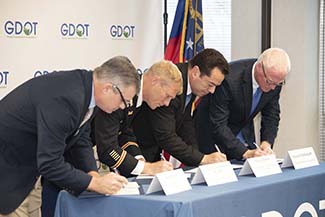
Figure 3. Signatories from FHWA, GDOT, USACE Savannah District, and GA DNR prepare to sign the Section 106 PA in Atlanta, GA. (image courtesy of GDOT)
- Georgia Section 106 Programmatic Agreement: Georgia DOT (GDOT) developed a programmatic agreement to expedite project reviews under Section 106 of the National Historic Preservation Act by establishing clear procedures for interagency coordination and communication with Section 106 consulting parties. This two-year effort has involved close coordination among GDOT, USACE, Georgia State Historic Preservation Office (SHPO), Advisory Council on Historic Preservation, and FHWA, as well as outreach to federally recognized tribes. State and Federal agencies came together for a formal signing ceremony to commemorate the effort in December 2019.
- Wisconsin Section 106 Program Analysis: Since spring 2019, FHWA has been conducting a program analysis of Wisconsin’s Section 106 program. Interviews were conducted with the FHWA Division Office, Wisconsin DOT, the SHPO, and tribal historic preservation specialists. FHWA is currently compiling a report and presentation with findings from the program assessment and will hold a two-day virtual workshop in November 2020 with State and Tribal representatives to discuss the results of the program analysis as well as next steps for the Section 106 program.
- Hawaii Gap Analysis: FHWA assisted Hawaii DOT in 2018 with an analysis to identify gaps between Hawaii’s current Section 106 review process and an improved process that could set Hawaii on a path to developing a programmatic agreement. The effort concluded with a virtual presentation of gap analysis findings in January 2019.
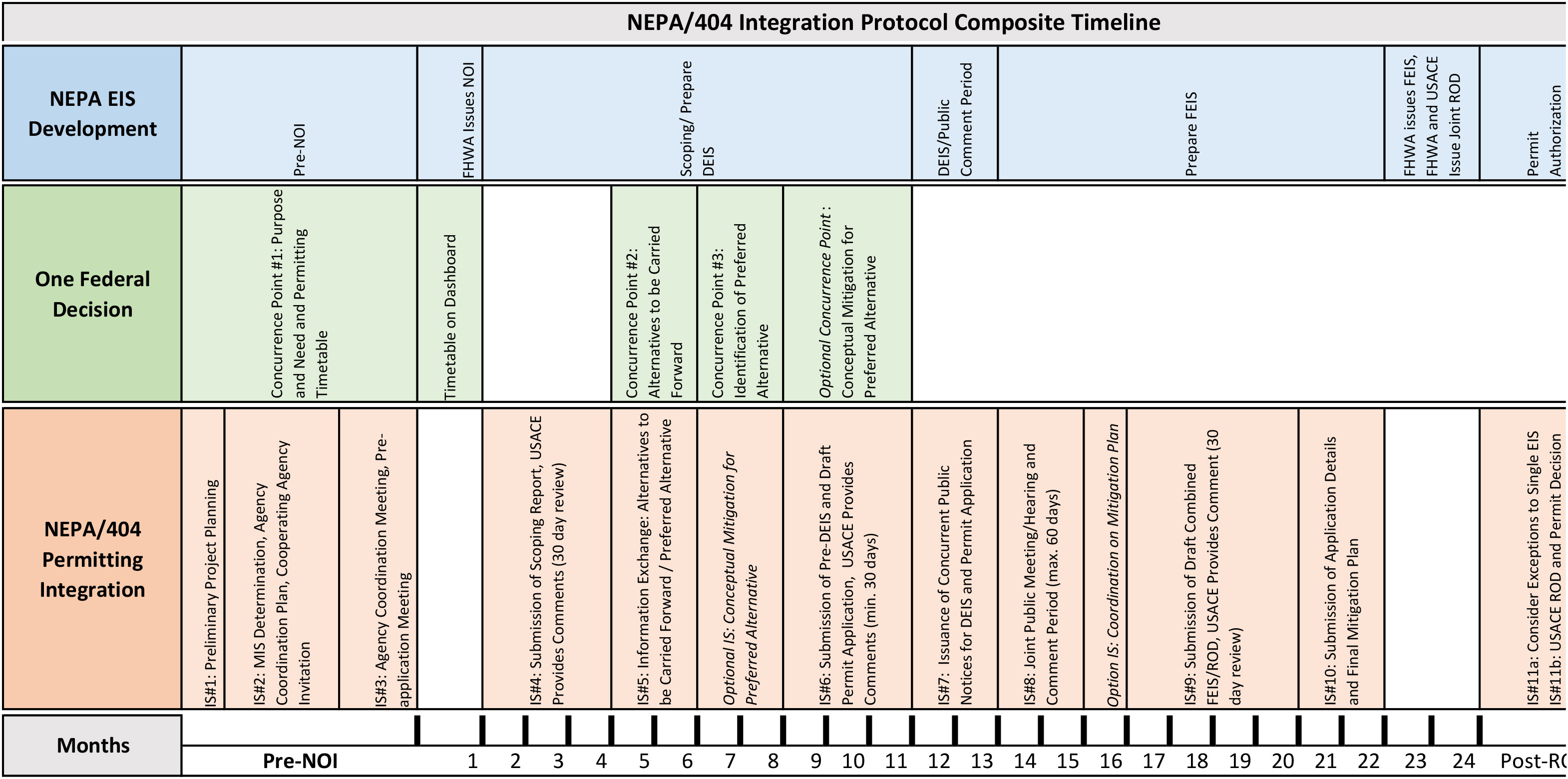
Figure 4. Example of a NEPA/404 Integration Protocol Composite Timeline to be included in the OFD template package expected for release later this year (credit: FHWA).
One Federal Decision
To help implement Executive Order 13807 and the One Federal Decision Memorandum of Understanding, which require Federal agencies to reduce environmental review and permitting timeframes to less than two years for major infrastructure projects, FHWA and USACE are developing a One Federal Decision (OFD) Section 404/NEPA merger template. This template will help States interested in either developing new integration processes or updating existing ones. The OFD template package is expected to be released in 2020 and will include the following components:
- Quick Start Guide with step-by-step instructions for using the template.
- Pre-Notice of Intent (NOI) Checklist to ensure all necessary information has been gathered and evaluated.
- Template Memorandum of Understanding (MOU) that can be modified for a State’s or project’s specific needs.
- Sample Agency Coordination Plan as a template to facilitate coordination and review under OFD.
- Other project delivery essentials such as a permitting timetable template, master schedule, flowchart, NEPA/404 integration timeline (see Figure 4, above), etc.
Benefits
The examples above highlight the benefits of taking an integrated and synchronized approach to the NEPA and permitting process. These benefits include:
- Increased efficiency—Synchronization improves the efficiency and effectiveness of the project development, mitigation, and decisionmaking process.
- Expedited project delivery—Integrating NEPA and permitting reduces the time and complexity of project development while ensuring projects receive the appropriate coordinated review.
- Resource savings—A synchronized review process reduces duplicative efforts, leading to predictability and cost savings.
- Improved relations with Resource Agencies—Frequent and continued engagement leads to trust and transparency resulting in better projects and thoughtful environmental outcomes.
Resources
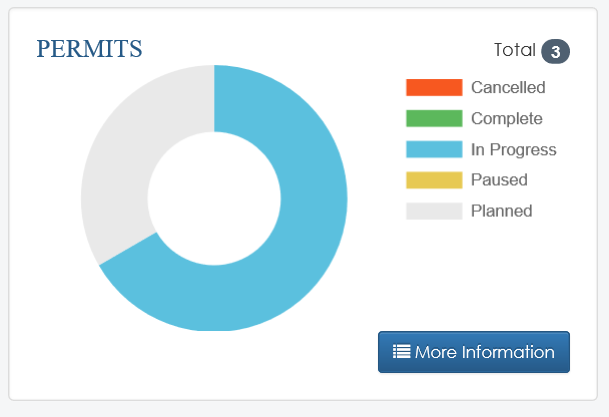
Figure 5. Screenshot of INPCT’s permit tracking feature (credit: FHWA).
To help facilitate the integration of NEPA and permitting, FHWA has created the following resources:
- FHWA Environmental Review Toolkit, a one-stop shop for topics and resources related to the FHWA’s environmental program.
- The Red Book, also known as Synchronizing Environmental Reviews for Transportation and Other Infrastructure Projects, functions as a how-to guide for synchronizing NEPA and other reviews, such as Section 404 of the Clean Water Act and Section 7 of the ESA.
- Interagency NEPA & Permitting Collaboration Tool (INPCT), an update of eNEPA expected to be deployed by late summer 2020. INPCT will be consistent with One Federal Decision reporting requirements, share data with FHWA’s Project and Program Action Information System (PAPAI), manage document version control, and improve the graphical user interface to make the tool easier to navigate.
Look What’s New!
- Check out the new on-demand webinar on Planning & Environment Linkages (PEL) today. Recorded in June 2020, the on-demand webinar consists of three presentations from PEL experts and practitioners. Topics covered include an overview of PEL authorities and available resources from FHWA, information about a State-level implementation of PEL, and the early involvement of resource agencies when using PEL approaches, specifically from the perspective of the USACE.
Successes in Stewardship is a Federal Highway Administration newsletter highlighting current environmental streamlining and stewardship practices from around the country. Click here to subscribe, or call (617) 494-2129 for more information.

